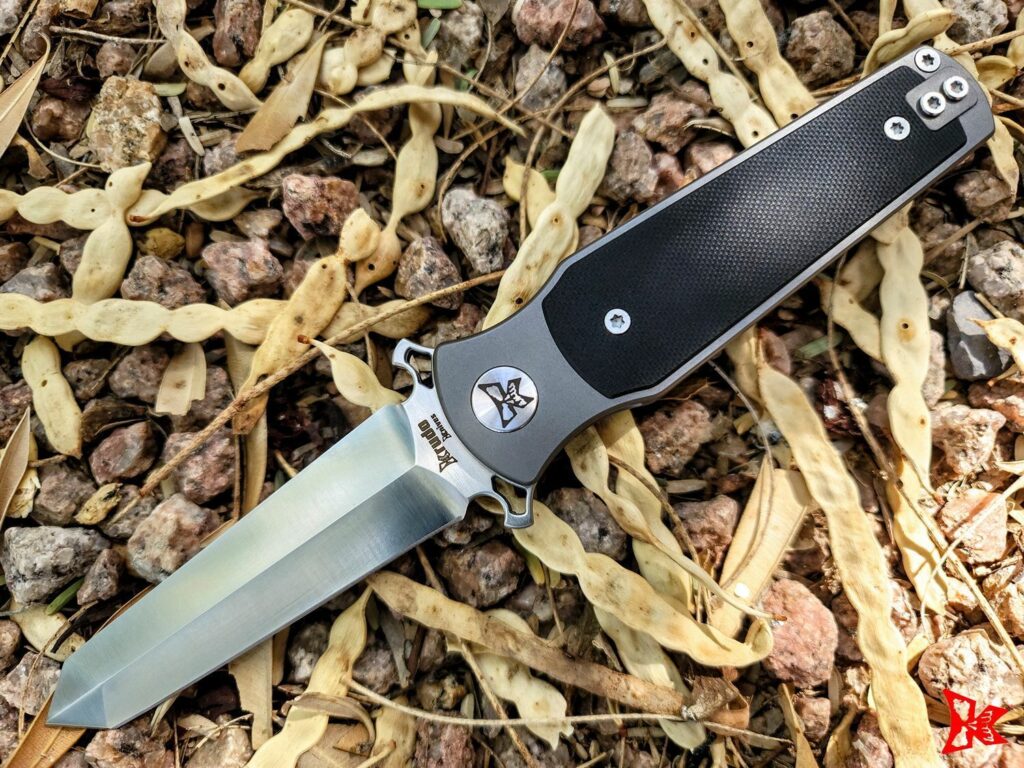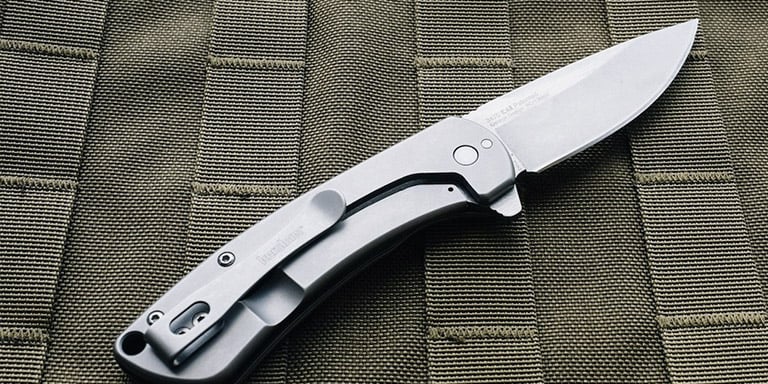This article explores locking knives’ features, usage, and benefits. Locking knives have proven indispensable to many people. Understanding a locking knife and how to use it is essential for outdoor enthusiasts, professionals, and safety-conscious individuals. This tutorial will help you understand locking knives and make informed choices.
What is a Locking Knife?
Locking knives have a mechanism to keep the blade open. Locking knives use mechanisms to improve safety and stability, unlike non-locking knives, which use friction or pressure to keep the blade open. The locking mechanism prevents accidental blade closure, enhancing control and trust.
Why Choose a Locking Knife?
Locking knives have advantages over non-locking knives. Safety is the main benefit. The locking mechanism prevents inadvertent blade closure and injury. Locking knives are useful for precise, controlled activities due to their stability.
Types of Locking Mechanisms

Locking knives have several blade-locking systems. Popular locking mechanisms:
Liner Lock: The liner lock is a common folding knife locking mechanism. A spring-loaded metal liner in the handle engages the blade base when extended.
Frame Lock: Like the liner lock, the frame lock secures the blade using part of the handle’s frame. The frame locks the blade when fully opened.
Back Lock: The lockback has a locking mechanism built into the handle spine. A metal spring bar engages the blade tang when completely extended.
Axis Lock: High-end folding knives employ the axis lock. A cylindrical bearing and spring-loaded bar hold the blade open.
Compression Lock: This liner lock version secures the blade with a little metal piece in the handle. This method is strong and simple.
What is a Locking Knife Used For?

Locking knives are multifunctional tools. Common locking knife uses:
Outdoor Activities: Camping, trekking, fishing, and hunting require locking knives. They are useful for cutting ropes, cooking, processing firewood, and other chores.
Professional Use: Precision-cutting professions prefer locking knives. Builders, carpenters, electricians, and mechanics use locking knives for cutting, stripping wires, and complicated labour.
Everyday Carry: Locking knives are popular EDC items. It helps with opening packages, cutting threads, and basic repairs.
Self-Defense: Locking knives are used for self-defense. However, locking knife rules differ by jurisdiction. Know your local laws.
Tactical Situations: In tactical scenarios, law enforcement, military, and security professionals use locking knives. The sturdy locking mechanism keeps the knife in place during vital procedures.
Collection: Craftsmanship and beauty make locking knives popular. Locking knives are collected for their elaborate designs, handle materials, and blade styles.
What to Consider When Choosing a Locking Knife?

Consider various factors when choosing a locking knife. Key considerations:
Blade Construction
Locking knives have stainless steel, carbon steel, and high-performance alloy blades. Edge retention, corrosion resistance, and sharpenability vary by material. Choose a blade material based on knife use.
Ergonomics and Handling
Locking knife handles determine comfort and grip. Wood, synthetic composites, and metals make handles. Choose a handle material that is stable and pleasant, especially in rainy situations.
Locking Device
Locking knives use several mechanisms. When choosing a knife, consider its locking mechanism’s reliability, use, and robustness. Certain jobs are easier with one-handed locking systems.
Blade Size
Locking knife blade length should meet your needs and local laws. Shorter blades are more manoeuvrable, but longer blades provide more reach and cutting power. Based on your use, choose a drop point, tanto, or clip point blade.
Legal Matters
Know and follow your state’s locking knife laws. To comply, check local legislation.
Questions (FAQs)
Locking knives—legal?
Locking knives are illegal in some countries, regions, and states. Carrying a locking knife requires knowledge of local laws.
Maintaining a locking knife?
Keep the blade clean and dry, lubricate the pivot points, and sharpen when needed. Follow the manufacturer’s care directions.
Locking knives for self-defense?
Locking knives for self-defense are regulated locally. To understand self-defense tool restrictions, consult local legal authorities.
Can a locking knife close?
Locking knives avoid inadvertent closing. The blade stays open until released by the strong locking mechanisms.
Locking knives: alternatives?
Slip joint knives are an alternative to locking knives. Slip joint knives have no locking mechanism and stay open with blade and handle tension. They are popular in areas with stricter knife carry rules and utilised for lighter chores.
Can I sharpen a locking knife?
Whetstones, sharpening rods, and guided sharpening systems can sharpen a locking knife. To avoid blade damage, get professional help if you are unsure or inexperienced.
Conclusion
Locking knives are multipurpose, safe, and stable. Locking knives are useful for outdoor activities, professional jobs, self-defense (where legal), and everyday carry.
When choosing a locking knife, consider blade material, handle ergonomics, locking mechanisms, and legal regulations. Prioritise safety and follow local locking knife laws.
